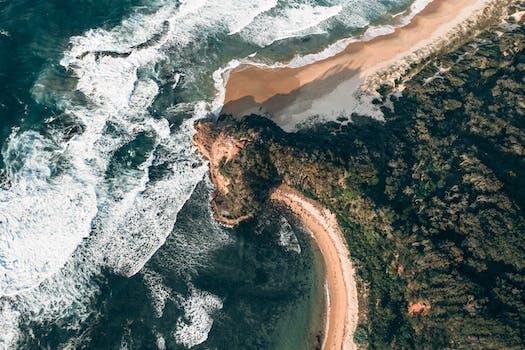-
Table of Contents
- How Heat Waves are Affecting National Park Operations: A Look at the Challenges and Solutions
- Strategies for Adapting National Park Operations to Extreme Heat Conditions
- The Impact of Heat Waves on National Park Wildlife and Ecosystems
- How National Parks are Utilizing Technology to Mitigate the Effects of Heat Waves on Operations
- Q&A
“Adapting to Survive: National Parks Thriving in the Heat!”
As the climate continues to change, heat waves are becoming more frequent and intense. This has a direct impact on the operations of national parks, as they must adapt to the changing conditions in order to protect visitors and preserve the natural environment. This paper will discuss the challenges that national parks face in adapting to heat waves, and the strategies they can use to mitigate the effects of extreme heat. It will also explore the potential benefits of adapting operations to heat waves, such as increased visitor safety and improved resource management. Finally, it will discuss the importance of collaboration between park managers and local communities in order to ensure successful adaptation to heat waves.
How Heat Waves are Affecting National Park Operations: A Look at the Challenges and Solutions

As the climate continues to change, heat waves are becoming more frequent and intense. This is having a major impact on national parks across the country, as they struggle to keep visitors safe and operations running smoothly. In this article, we’ll take a look at the challenges posed by heat waves and some of the solutions that parks are implementing to address them.
One of the biggest challenges posed by heat waves is the risk of heat-related illnesses. When temperatures soar, visitors can become dehydrated, suffer from heat exhaustion, or even experience heat stroke. To help prevent these illnesses, parks are taking steps to ensure that visitors stay hydrated and take regular breaks in the shade. They are also providing more water stations and offering free water bottles to visitors.
Another challenge posed by heat waves is the risk of wildfires. When temperatures are high and humidity is low, it creates the perfect conditions for fires to start and spread quickly. To help prevent this, parks are implementing fire safety measures such as closing certain areas to visitors, increasing patrols, and providing more fire extinguishers.
Finally, heat waves can also cause damage to park infrastructure. High temperatures can cause roads and trails to become cracked and unstable, making them dangerous for visitors. To address this, parks are taking steps to repair and maintain roads and trails more frequently. They are also providing more shade and rest areas for visitors to take breaks in.
Overall, heat waves are posing a major challenge to national parks. However, with the right measures in place, parks can ensure that visitors stay safe and operations continue to run smoothly.
Strategies for Adapting National Park Operations to Extreme Heat Conditions
1. Increase Visitor Education: Educate visitors on the importance of staying hydrated and wearing appropriate clothing and sunscreen when visiting the park during extreme heat conditions.
2. Provide Shade and Water: Install shade structures and water fountains throughout the park to provide relief from the heat.
3. Adjust Hours of Operation: Consider adjusting the hours of operation to avoid the hottest parts of the day.
4. Offer Cooling Centers: Establish cooling centers throughout the park where visitors can take a break from the heat.
5. Monitor Air Quality: Monitor air quality and issue warnings when air quality is poor due to extreme heat.
6. Limit Physical Activity: Limit physical activities such as hiking and biking during extreme heat conditions.
7. Provide Heat Relief Stations: Set up heat relief stations throughout the park with misting fans, cold water, and other cooling items.
8. Adjust Trail Conditions: Adjust trail conditions to reduce the risk of heat-related illnesses.
9. Offer Alternative Activities: Offer alternative activities such as educational programs and guided tours that can be done indoors or in the shade.
10. Monitor Visitors: Monitor visitors for signs of heat-related illnesses and provide medical assistance if needed.
The Impact of Heat Waves on National Park Wildlife and Ecosystems
Heat waves can have a devastating impact on national park wildlife and ecosystems. As temperatures rise, animals and plants are forced to adapt to their changing environment or face the consequences.
For animals, heat waves can cause dehydration, exhaustion, and even death. When temperatures soar, animals must find ways to cool off, such as seeking shade or taking a dip in a nearby body of water. If these resources are not available, animals may suffer from heat-related illnesses or even die.
Heat waves can also have a negative impact on plant life. High temperatures can cause plants to wilt and die, leading to a decrease in food sources for animals. In addition, heat waves can cause an increase in wildfires, which can destroy entire ecosystems.
The effects of heat waves on national park wildlife and ecosystems can be long-lasting. For example, if a heat wave causes a decrease in food sources, animals may be forced to migrate to other areas in search of food. This can disrupt the balance of an entire ecosystem.
Heat waves can also cause an increase in invasive species. As temperatures rise, certain species may be able to survive and thrive in areas where they were previously unable to. This can lead to a decrease in native species, as well as an increase in competition for resources.
Heat waves can have a devastating impact on national park wildlife and ecosystems. It is important for park managers to be aware of the potential effects of heat waves and take steps to protect their wildlife and ecosystems. This may include providing shade and water sources for animals, as well as monitoring for invasive species. By taking these steps, park managers can help ensure that their parks remain healthy and vibrant for years to come.
How National Parks are Utilizing Technology to Mitigate the Effects of Heat Waves on Operations
As the effects of climate change become more and more apparent, national parks are having to find ways to mitigate the effects of heat waves on their operations. Fortunately, technology is helping them do just that.
One way national parks are using technology to combat the effects of heat waves is by installing smart irrigation systems. These systems use sensors to monitor soil moisture levels and adjust the amount of water they release accordingly. This helps to conserve water and prevent over-watering, which can be a major issue during heat waves.
Another way national parks are using technology to mitigate the effects of heat waves is by installing solar-powered fans. These fans help to keep visitors cool by circulating air and providing a refreshing breeze. They also help to reduce the amount of energy used by traditional air conditioning systems, which can be a major drain on resources during heat waves.
Finally, national parks are using technology to monitor air quality. Sensors are placed throughout the park to measure levels of ozone, carbon dioxide, and other pollutants. This helps park staff to identify areas where air quality is poor and take steps to improve it.
Overall, national parks are utilizing technology in a variety of ways to mitigate the effects of heat waves on their operations. By using smart irrigation systems, solar-powered fans, and air quality monitoring, they are able to keep visitors safe and comfortable while conserving resources.
Q&A
1. What strategies can be used to reduce the impact of heat waves on national park operations?
Answer: Strategies to reduce the impact of heat waves on national park operations include providing shade and water for visitors, scheduling activities during cooler times of the day, increasing air conditioning in visitor centers and other public areas, and providing additional medical staff and supplies. Additionally, parks can implement heat-related safety protocols, such as providing heat-related warnings and advisories, and implementing heat-related restrictions on activities.
2. How can parks ensure that visitors are aware of the risks associated with heat waves?
Answer: Parks can ensure that visitors are aware of the risks associated with heat waves by providing heat-related warnings and advisories, and implementing heat-related restrictions on activities. Additionally, parks can provide educational materials about heat-related safety, such as signs, brochures, and videos.
3. What measures can be taken to protect park staff from the effects of heat waves?
Answer: Measures to protect park staff from the effects of heat waves include providing shade and water, scheduling activities during cooler times of the day, increasing air conditioning in staff areas, and providing additional medical staff and supplies. Additionally, parks can implement heat-related safety protocols, such as providing heat-related warnings and advisories, and implementing heat-related restrictions on activities.
4. How can parks ensure that their operations are sustainable in the face of increasing heat waves?
Answer: Parks can ensure that their operations are sustainable in the face of increasing heat waves by implementing strategies to reduce the impact of heat waves on operations, such as providing shade and water for visitors, scheduling activities during cooler times of the day, increasing air conditioning in visitor centers and other public areas, and providing additional medical staff and supplies. Additionally, parks can implement heat-related safety protocols, such as providing heat-related warnings and advisories, and implementing heat-related restrictions on activities.In conclusion, adapting national park operations in the face of heat waves is a complex challenge that requires a multi-faceted approach. Park managers must consider the impacts of heat waves on both visitors and wildlife, and develop strategies to mitigate those impacts. This may include providing shade and water for visitors, adjusting park hours, and implementing fire management plans. Additionally, park managers should consider the potential for climate change to increase the frequency and intensity of heat waves, and plan accordingly. By taking a proactive approach to heat wave adaptation, national parks can ensure that visitors and wildlife are protected from the impacts of extreme heat.
![]()










